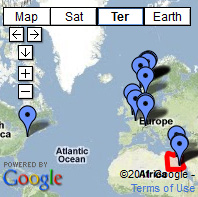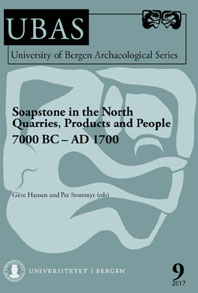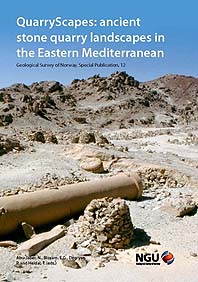
Hyllestad millstones still in use
Last week the Norwegian “millstone community” invited to an international conference in Bergen – “Seen through a millstone: Geology and archaeology of quarries and mills”. It included an excursion to the Hyllestad quarries where the participants got to know a local community that cares for the landscape and its millstone traditions in an impressive way. Key is the involvement of pupils.
15-20 years ago there was hardly any knowledge about the gigantic millstone quarry landscape in Hyllestad north of Bergen in Western Norway. Thanks to a fantastic work headed by the small, local community the landscape is now a candidate for inclusion on the World Heritage List, as part of a transnational, serial nomination of “Viking Monuments and Sites”. Hyllestad produced quernstone from the Migration period onward, and in the Viking Age (800-1030 AD) and the Middle Ages (1030-1537 AD) production greatly intensified with bulk export to Scandinavian/North-European markets and to some extent also to Iceland. With increasing competition from other millstone producers, quarrying slowly faded out, but did not stop before the end of the 19th century.
From North-Africa to the Arctic Circle
Just natural, then, that the foundation “Norwegian millstone centre” at Hyllestad organised the fourth international millstone conference after previous meetings in La Ferté (2002), Grenoble (2005) and Rome (2009). The conference was co-organised by the Geological Survey of Norway, which runs the research project “Millstone”, and Bryggen Museum in Bergen, where the conference was held 19-21 October.
About 50 people from all across Europe gathered to listen to 30 presentations on many aspects of millstone and milling, such as archaeology, geology, traditions, gender issues and symbolism. The context of the presentations stretched from North Africa to the Arctic Circle and from saddle querns in prehistory to early modern milling technology. Personally, I was intrigued by presentations by a French group and several others on the transition from the use of saddle querns to rotary mills in Europe – a transition that may largely have developed from the Iberian Peninsula via France and northwards, from about 500 BC to 200-400 AD – last in Scandinavia. Here it seems to have been intricately connected with another transition; from porridge to bread, which first took place among the elite and was perhaps associated with religious ideas.
Also intriguing were the many presentations of Norwegian millstone quarry landscapes, as well as huge open-air and underground quarries in France (e.g. Le Mont Vouan) and Germany (e.g. Eifel/Mayen). Presentations will be published in a special volume. As for now, the programme is available here.
Guided by school children at Hyllestad
Though intriguing, the presentations could hardly match the enthusiasm of the Hyllestad school children – our guides through the local millstone quarry landscape on the excursion day. The 13-14 year old pupils are given education in issues relating to history, technology, geography, language and presentation techniques through weekly classes within the millstone quarry landscape and the “millstone park”, which has been set up for visitors and locals alike.
The education programme must be a great success. I have rarely been met with such enthusiasm – and skill – at an excursion for professional researchers. The pupils took us to a few highlights of the 27 square kilometres large quarry landscape, explained the history and technology of quarrying and outlined the place of Hyllestad in the international trade with millstone from the Viking Age onward. And all in superb English. Also, they showed us details in millstone crafting techniques and invited us to join them in a little practical course on production of millstone from the garnet-micaschist. The latter was particularly rewarding, not least since exchange of skill, ideas and knowledge between youngsters and adults is greatly promoted through involvement in a common activity. The Hyllestad school can be proud of their pupils.
The programme is part of a greater promotion of the millstone landscape within the local community with its 1500 inhabitants. One of the ideas is to strengthen identity in using the heritage for both various education programmes and for social and economic development, the latter particularly through tourism. A World Heritage nomination will definitely aid the community in their efforts.
The milling complex at Skor
The millstones produced at Hyllestad were not only traded to far-away places, but certainly also used in local and regional farm and community mills. At a place called Skor, just outside the quarry landscape, we continued our excursion along the early 19th century West-Norwegian postal road to a traditional, restored water mill complex, one of the most illustrating of its kind in Norway. The complex is fully functional and includes both several flour mills and a saw.
The organisers gave us the last pleasant surprises as in one of the mill houses a little violin concert was performed for us and home-made beer served – produced the traditional way with malt milled by Hyllestad querns. Thanks to Astrid Waage, Torbjørn Løland, Tom Heldal and others in the organising committee for a most rewarding conference!
Links and literature
- All about Hyllestad: www.kvernstein.no
- All about the “Millstone” project: www.millstone.no
- All about European millstones: http://meuliere.ish-lyon.cnrs.fr/en/welcome.htm
Publications from previous millstone conferences:
The Hyllestad quarries and World Heritage nomination:
Location of the Millstone park at Hyllestad:
















Pingback: The first reported prehistoric grinding stone quarry in the Egyptian Sahara (new paper) | Per Storemyr Archaeology & Conservation
Pingback: Moving to work with the Norwegian Millstone Centre at Hyllestad in West Norway | Per Storemyr Archaeology & Conservation
Do you know whether mill stones from the Viking period ever were inscribed with Runic inscriptions?
John Williams
UK
To my knowledge runic inscriptions are not found on millstones, but please check with the experts at http://www.kvernstein.no or http://www.millstone.no. Good luck! Per